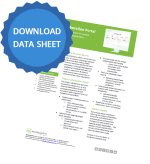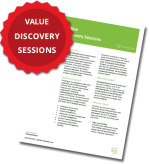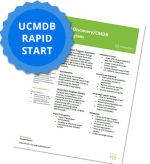Don’t Roll the Dice; Emulate Testing Conditions
By: Matt Angerer
The software testing field is in a constant state of progressive evolution. Advanced test automation capabilities like service and network virtualization lead these technological breakthroughs. According to the World Quality Report, 33 percent of QA and Testing budget is now allocated to testing hardware and infrastructure. The fact that such a significant amount is dedicated to testing hardware indicates the importance of properly configured test environments for applications.
Best Buy experienced the consequences of not testing their mobile infrastructure when their website suffered sporadic technical issues over Thanksgiving weekend in 2014. The sheer volume of shoppers on mobile vs. desktop platforms ultimately overwhelmed their site infrastructure. CNBC later reported Best Buy’s apologetic statement, “BestBuy.com has experienced record levels of website traffic. This has affected site performance and we have temporarily taken the site down in response. We are taking measures to restore full performance of the site as quickly as possible.” The network performance issues present on HealthCare.gov is yet another high-profile example of why organizations of all shapes and sizes need to pay particularly close attention to their service and network virtualization strategies.
Your Crystal Ball is Virtualization
The examples with Best Buy and HealthCare.gov are cases of blatant disregard for performance and stress testing that made a big splash across media channels. With the advent of globalization, organizations of all shapes and sizes are faced with challenges of consumer-facing mobile applications or customer facing portals. Let’s face it, nobody has a crystal ball. What we do have today though is an enormous amount of data (aka Big Data). Tools like HP Network and Service Virtualization make it possible to emulate real-world conditions and simulate end-to-end testing scenarios that we never could before.
If you run SAP, then you understand how challenging it is to test connectivity and data validation between internal SAP systems (e.g., ECC and CRM) and 3rd party systems like Vertex for tax determination. More vexing are the many SAP customers with multiple clients across their testing landscape, each with varying levels of testable data and connectivity to middleware systems like SAP PI/PO (formerly XI).
If client 120 is configured with SAP PI/PO, but client 160 is where the bulk of your pre-configured master data lies – you’re faced with a difficult tradeoff of whether you should abandon regression testing in client 160 and focus your efforts on client 120, where middleware connectivity exists. But what if there was a solution that allowed you to virtualize the service end points in client 160 and achieve the level of end-to-end testing you were seeking? HP Service Virtualization comes out-of-the-box with pre-configured accelerators to help your organization verify IDOCs and simulate end-to-end testing earlier in the software delivery lifecycle.
Shifting left is an industry term often used among enterprise ALM practitioners. Our example here epitomizes what shifting left is all about. Don’t wait until the last leg of your delivery lifecycle to start the end-to-end trading partner testing outlined in your master test strategy. By leveraging service virtualization, you have the opportunity to shift left and detect problems before they have a significant impact on your project schedule.
Strike a Balance with People, Process, and Tools
The time it takes for test environments to be built and properly configured often results in a reduction in team productivity. According to Washington Technology, software testing can comprise up to 50 percent of resources in many development schedules. Manual testing often compounds any errors, and requires a great deal more effort to troubleshoot issues. As a result, the World Quality Report indicates that an increasing number of organizations are now making a conscious effort to focus upon process improvement, specifically in automating the testing environment.
At ResultsPositive, we believe that your testing process is the key to your success, and that each organization needs to closely analyze how their people and tools support the overall process to maximize productivity. Similar to how the human body works, you can’t look at the function of the heart without taking into consideration how the arteries, liver, and kidneys work to support the cardiac system.
With network virtualization on the rise, it’s possible to emulate networks more accurately than ever before. CIOs are recognizing how this tool supports their overall testing and lets them ship software with confidence. In fact, almost one-third of IT leaders interviewed in a variety of sectors now report that service and network virtualization is a top priority for their organization, according to the World Quality Report. Another 62 percent of participants now report they are using virtualization for effectively emulating network conditions in their performance testing.
Deliver with Confidence by Shifting Left
Test automation makes it possible to efficiently run tests that were previously created against new environments or functionalities without the need to expend additional effort. Washington Technology points out that automated software testing can help development teams improve their testing productivity by about 75 percent!
This makes it possible to speed up feedback cycles for your project team, ultimately reducing the time it takes to deliver a product to market. Once the application is rolled out, your stakeholders can also take advantage of increased confidence. The ability to consistently run tests on a variety of different environments increases overall confidence in the product, and makes for a more profitable and rewarding experience for everyone.
As software systems become increasingly large and complex, both the time and cost associated with testing increases as well. Consequently, it is now incumbent upon you to look for solutions that help you shift left. Evolving automated software testing solutions continue to make that possible.
For more information on shifting left with the inclusion of HP Network or Service Virtualization in your overall testing strategy, contact the ResultsPositive ALM Productivity Team at rpinfo@resultspositive.com or email me directly at mangerer@resultspositive.com. We can help your organization realize the full benefits of shifting left with virtualization.
About ResultsPositive
ResultsPositive, award winning HP Partner of the Year for Sales Growth (2014), Customer Support (2013), PPM (2010, 2011, 2012), and Executive Scorecard (2012), was founded in 2004. ResultsPositive is a leader in IT Software consulting delivering Project & Portfolio Management, Application Transformation, Business Intelligence, Mobility, Application Lifecycle Management, IT Service Management, Business Service Management, Healthcare Transformation, & Cloud and Automation solutions across the entire HP IT Performance Suite for medium sized and Fortune 500 companies. As both an HP Platinum Partner and HP ASMP-S Support Provider, ResultsPositive has the experience, support, and training necessary to turn your complex IT processes into tangible business solutions.
For more information about our testing services, visit:
https://resultspositive.com/application-lifecycle/testing/
Subscribe for the latest RP Blog Updates:










